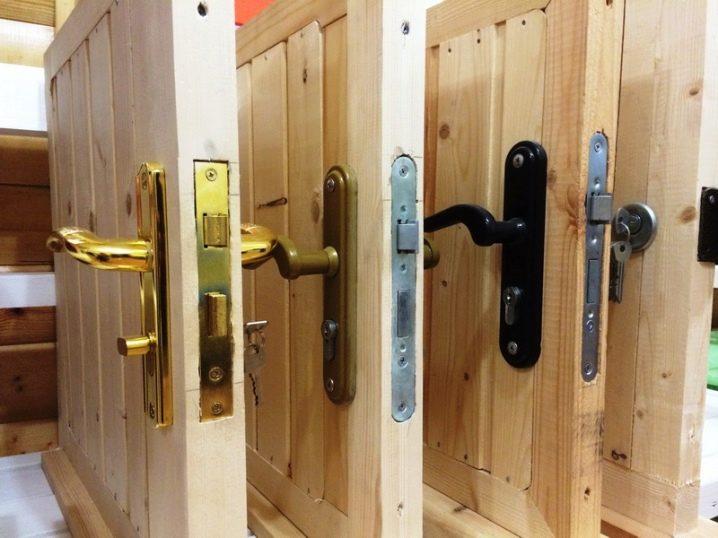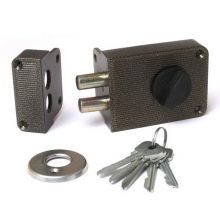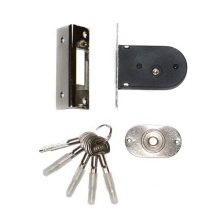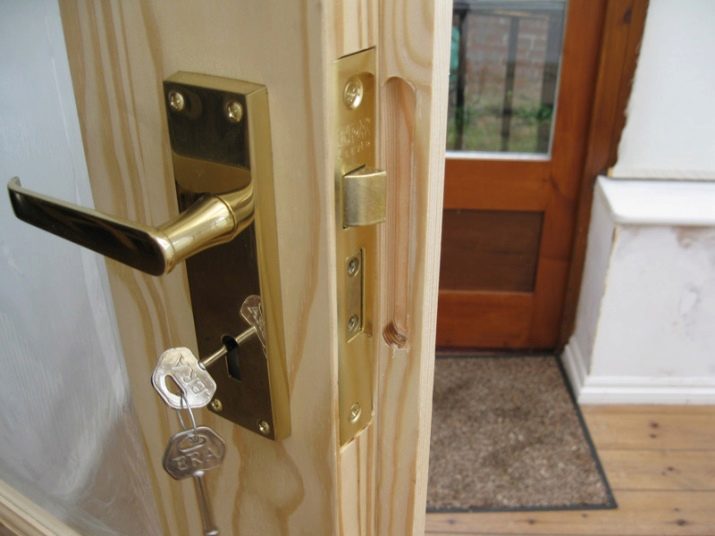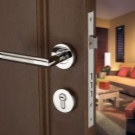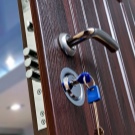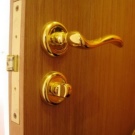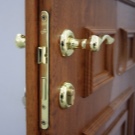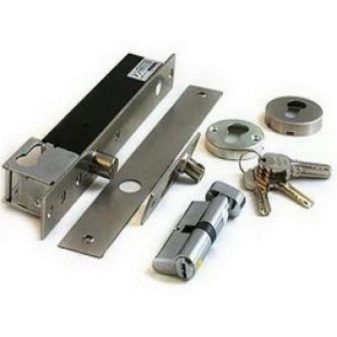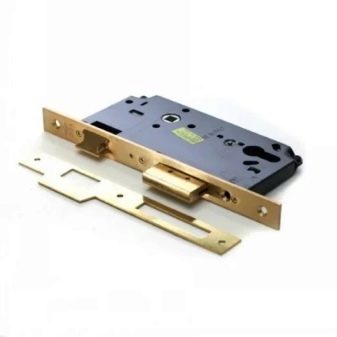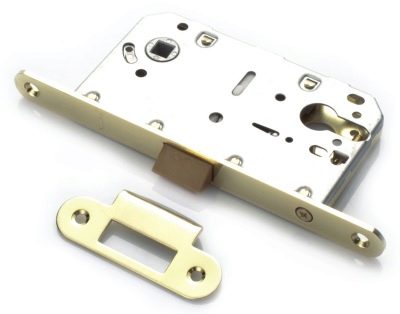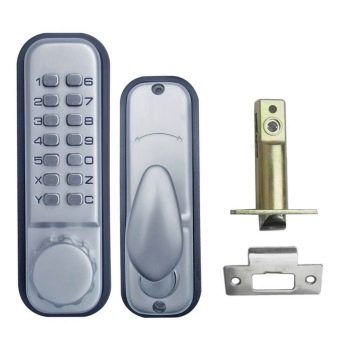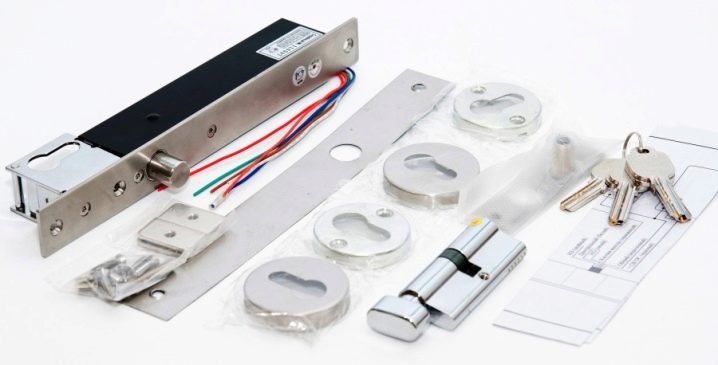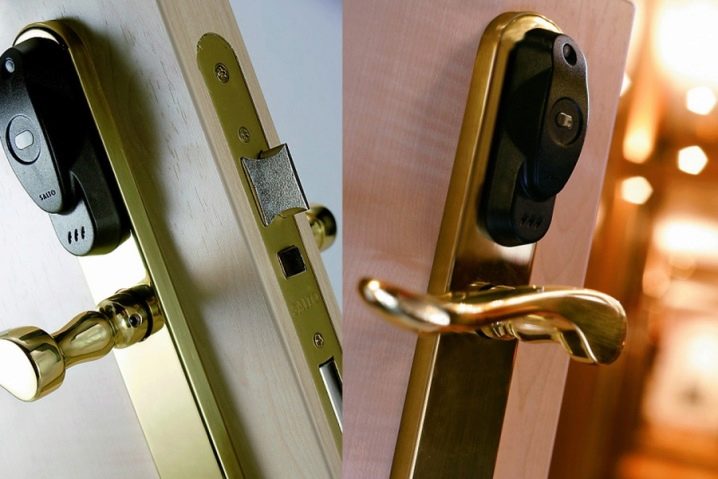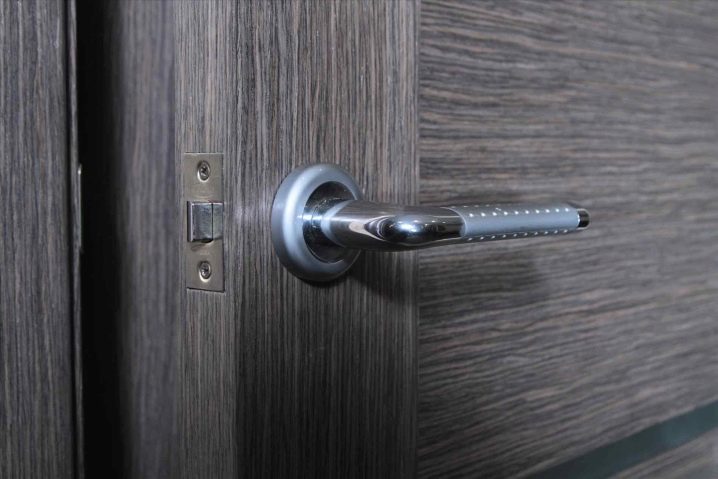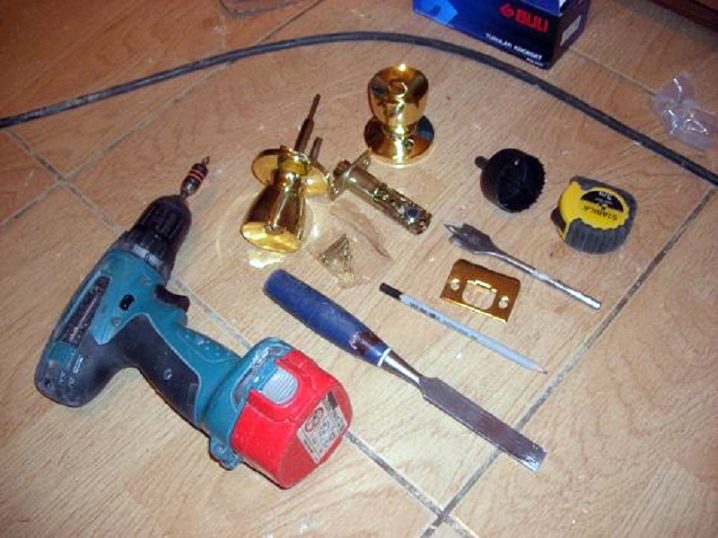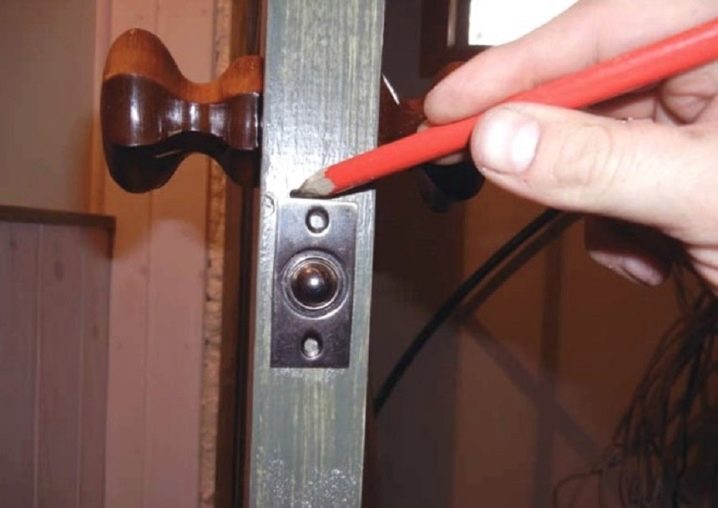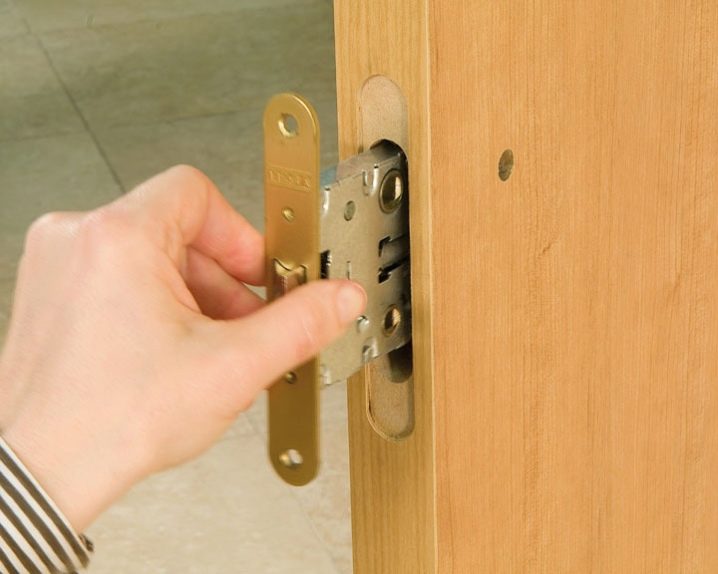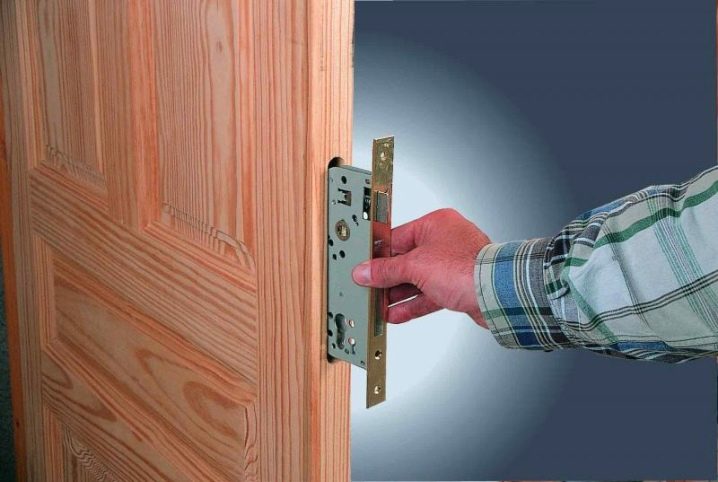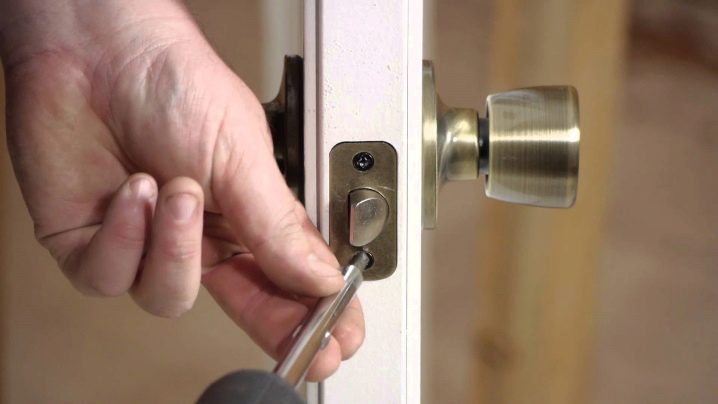Mortise locks for wooden doors: description and installation

Often as a door to enter residential apartments using models of wood. They are strong enough, retain heat well and protect the room from excessive outdoor noise. In 90% of cases of unauthorized entry into a home, it is not the doors themselves that break open, but locks. Based on this, it is more expedient to purchase a good mortise type lock for an existing wooden door than to change it to a steel model.
Characteristic
The locking mechanisms on the doors are mounted in three ways, according to which the models of locks are divided.
- Mortise. The locking device is mounted directly inside the door body. It is the most versatile and safe type of locking device.
- Overhead.
- Hinged.
In our article we will focus on the mortise locking mechanisms. To begin, consider the advantages of using mortise devices.
- The mechanism hidden in the door body complicates the unauthorized access to the larva and the lock bolts.
- Protection of the lock mechanism from ingress of dust and litter.
- Preserving the inviolability of the appearance of the door, which is especially important for products finished with fine wood. From the outside, only the well bore and the door handle are visible.
Disadvantage: the dead lock can be installed in the door only once, if the mechanism breaks, the door will have to be replaced or its overhaul done, redoing the niche for the lock device.
Kinds
The most common types of mortise locks for wooden doors are:
- cylinder - the most reliable and affordable to install models;
- suvaldnye - have a high degree of resistance to burglary;
- code;
- electromechanical.
Systems based on rotary cylinders are distinguished by their reliability and ability to resist hacking with a master key. In addition to these advantages, high-quality cylinder locks have a very large margin of safety and wear resistance. Also, the simplicity of attachment and the uniformity of the size of the lock cylinder facilitates itsreplacement in case of breakage or loss of the key. Cylinder locks are small in size. The durability of the cylinder mortise lock is achieved through the use of brass guides and high-strength drive.
The second place in popularity is occupied by lever locks. The mechanism is based on the use of several levers - special code plates, which are shifted only by a key with a suitable profile. A mortise lock mortise perfectly resists forceful opening and cutting of the locking bolts. Produce and models with the possibility of conversion - it is very convenient, because with the loss of the key does not have to dismantle the entire lock mechanism. The recoding procedure itself, when carried out by specialists, takes only 5-10 minutes.
Combination locks are mounted as follows: the main part of the mechanism is placed inside the door body, and only the code plate with numbers is left outside. The constipation is opened by a pre-set digital combination. From the outside, such a lock mechanism cannot be disassembled. This type of lock devices are more often used in offices and in manufacturing plants.They are also common as locking mechanisms for access doors in multi-apartment high-rise buildings.
In addition to the types listed above, hidden locking mechanisms with electric or electromagnetic elements are used for locking wooden door structures. The mechanism is embedded inside the door body and connected to the command board. The main condition for mounting the mortise locking device is to mask its location well. Often, electromechanical blockers are combined with a cylinder-type mortise lock.
In addition to the locking mechanisms, a combination locking device with a locking bolt on the power supply can be inserted into the wooden door. These types of locking mechanisms require the supply of an electrical cable. When current is applied to the solenoid coil, the bolt connected to the core retracts into the mechanism and the door opens.
In the absence of an electric current, the bolts are in the slots and the door is closed. That is, if you cut the supply cable lock (with unauthorized penetration), the mechanism will not unlock. Only the native key can help here.If it is lost, it is not difficult to replace the lock cylinder. It is impossible to open such locks with the help of a master key, because the burglar will not be able to predict the behavior of the mechanism on the cylinder shift.
How to choose?
When choosing a door lock, first determine which door you need it for. For the interior door is better to choose a simple mortise lock or latch-lock. For entrance doors, you can choose both a laid-on locking mechanism and a mortise, but here the security of the home begins to play a big role. That is, for the doors of apartments, houses it is better to choose a mortise locking device of a higher safety class. These are cylinder, suvaldnye models, and also electromechanical, coded locking devices.
On the interior doors can be put as just a latch, and a full lock with a bolt and latch. If you have chosen a lock with a latch only, keep in mind that they are mechanical, magnetic and falevy. Falovy latches open-close a door under the influence of the handle. Magnetic locks maintain the closed state of the door with the help of magnetized elements, attracted to each other.
The bolts in the locks also differ in shape: they are straight and hooked. The first type is used for swing doors, the second - for sliding door structures, to counteract the unauthorized shift of door leaves. Table of comparative characteristics of locks of various security classes.
Lock Class | Security level | Action to break, not less, N | Minimum unauthorized opening time, minutes | Field of use | ||
Hasp and Constipation Strap | Bolt mechanism | The front panel joint with the body of the mortise | ||||
I | Small | ≈2940 | ≈785 | ≈785 | ≈1-3 | Auxiliary and door between rooms. |
II | Normal | ≈2940 | ≈785 | ≈785 | ≈5-10 | Doors to enter residential apartments. |
III | Elevated | ≈4900 | ≈1500 | ≈1960 | ≈10-15 | Doors for entry to residential apartments, non-residential premises where money is kept, valuables and / or security. |
IV | Tall | ≈6860 | ≈1960 | ≈4900 | ≈30-40 | Doors for entry to residential apartments, non-residential premises where money is kept, valuables and / or security. |
Installation
The procedure for installing the mortise lock of various subspecies is almost the same. First of all, select the set of tools you need for plunging the lock.
- electric drill with suitable size drills or a milling device;
- pencil for marks;
- chisels (narrow and wide);
- screwdriver and screwdriver;
- hammer;
- measuring device (tape measure, ruler, etc.);
- Screws (screws, screws).
Choose a convenient location of the locking mechanism; it is usually slammed into the door at a height of 1-1.1 m from the floor surface. With the lock attached, mark the location of the mechanism and the striker on the end face of the door and the jamb. If you have a milling device, your task of cutting the lock slot is greatly simplified. The quality of the work done will also increase, while reducing the likelihood of damage to the door body.
Remove the door from the hinges (if it is already hung on them), turn it upside down and lock it in this position. The location of the future castle is marked with two strips of adhesive tape (painting). Insert the cutter of the required size into the milling unit and adjust the depth of penetration into the door body. Then make a groove. If you have an electric drill, then drill two indentations along the top and bottom marks for the depth and width of the locking structure. This can be done in two ways:
- not to make a dimple at once for the whole value, but gradually, 1-2 cm to move deeper into the desired mark;
- Drill out at once the deepening of the required size; for this, make tags with tape or a piece of wire.
Keep in mind that the dimensions of the drilled recess should be a couple of millimeters larger than the dimensions of the inserted lock. The body of the mechanism must be placed in the groove along with the front plate without obstacles. Maintain a strict perpendicularity of the drill in relation to the body of the door to prevent displacement. Treat the resulting deepening with a chisel and a hammer. Achieve maximum flatness of the groove walls. Then mark up the place of the front slats. Insert the lock into the recess and draw a pencil around the bar. On the resulting contour we knock out a small recess with a chisel.
Next, you should plan the location of the well and pens. Attach the device to the door body opposite the groove and use the ruler to accurately mark the position of the handle and the borehole of the lock. Drill with a suitable drill size to drill holes for them. Now insert the locking mechanism into the groove and if there are no discrepancies, attach it to the door body with the screws included in the device package.If you find any inaccuracies, align the recess with a chisel and a file, constantly testing the accuracy of the entrance of the lock mechanism.
The next stage is the debugging of the functioning of the lock and the preparation of grooves for the sliding bolts and the latch. Insert the lock cylinder bore, attach it with the screw included in the kit, test its operation. If the problem is not visible, fasten the door handle and front plate. Paint the latch and drawbars, cover the door, turn the key so that traces of them are printed on the doorframe. Cut the grooves under the latch and bolts, trim the edges with a chisel. Hollow out the recess under the strike plate. Attach it to the screws included in the lock set.
Check the operation of the lock - twist the handle, turn the key back and forth several times. If the lock works without effort, there is no distortion anywhere, then everything is in order. If you find flaws, do a little chisel and file work to even out the location of the locking mechanism details. As you can see, self-installation of the mortise model of the lock in a wooden door is quite simple and quite capable of everyone.To reduce the likelihood of problems due to the inaccuracy of the procedures performed, test the functioning of the mechanism at each stage. Remember that accuracy and thoroughness in work is half the success!
How to install a mortise lock for wooden doors, see the following video.
